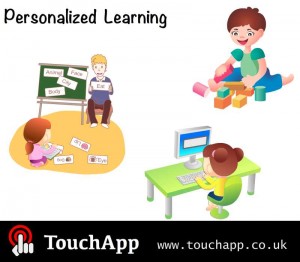What is personalized learning?
Learning should be a deeply personal experience. Children have a huge appetite and capacity to learn, yet all do not learn as enthusiastically or effectively at school. That may well be because the education system fails to understand and meet their particular needs and aspirations. Children come into education from different starting points, with different resources and expectations. They often learn in different ways, at different paces and styles. An effective personalized education service should meet the different needs of learners: differentiated provision for differentiated need.
Personalized learning system allows children to progress towards common standards but through different routes, employing different styles of learning and assessment. Personalized learning should equip children to make choices about which subjects to study, what settings to study in, what styles of learning to employ. But personalized learning is not just about giving learners more choice. It means engaging learners in a highly interactive process of learning. Learning is not just the successful transfer of knowledge and skills. Learning comes through interaction in which the learner discovers for themselves, reflects on what they have learned and how. Effective learning has to be co-created between learner and teacher, in which both invest effort and imagination. Personalized learning is learner led learning, within a framework of standards. The goal is to motivate children and parents to become active investors in their own education.
How schools and teachers to adapt to change?
There are some key skills schools and teachers should acquire to bring successful personalized learning into the classroom:
1. Acquiring big data and real-time data analysis.
More accessible learning data powers personalization in education. Technology is giving us more data, more quickly. Students’ performance data through homework assignments and assessments can be constantly collected and instantly feedback to educators. Learning data analytics helps to take real-time decisions on modification of the course according to flexibility of learners and to detect presumable borderline students who may need a mediation and extra care to avoid failing a course module or an entire course.
2. Giving personalized instruction.
In traditional education system, instructors often “teach to the middle,” delivering a set curriculum that is generally designed for the average student. In the digital, personalized school, each child will have individual daily timetable made up of different combinations of common learning blocks. Much of the learning is done in small groups or one-to-one sessions. Teachers still design the formal learning that goes on in the school but do not deliver all of it. Several grades of teaching assistants deliver different modules for different groups. This allows children who need more intensive attention to get it. Other adults support children throughout the school – counselors, artists and social entrepreneurs. Learning takes place in many different spaces across the school, not just in classrooms. Many older children are learning at other partner schools or with nearby employers and social enterprises.
3. Technology is available to help manage personalized learning.
In the future, children will learn more from the smart phones, tablets (iPad), computers, televisions, their peers and their games consoles. The technology of informal learning is more flexible, adaptive and genuine personalized learning schools should make much more flexible use of technology and tools, which the children regard as their property and so take responsibility for (such as 1:1 iPad Program). Children should be encouraged to use different technologies and media to present their work – audio, PowerPoint, video, photographs (see more iPad tools for education). Information technology creates a shared platform for learning, linking school, home and community, in which learners and teachers work together far more collaboratively. That is the way leading edge businesses such as TouchApp already operate. It should become the norm for schools.
Follow us on Twitter: @TouchApp_uk
From Mobile App development company TouchApp
